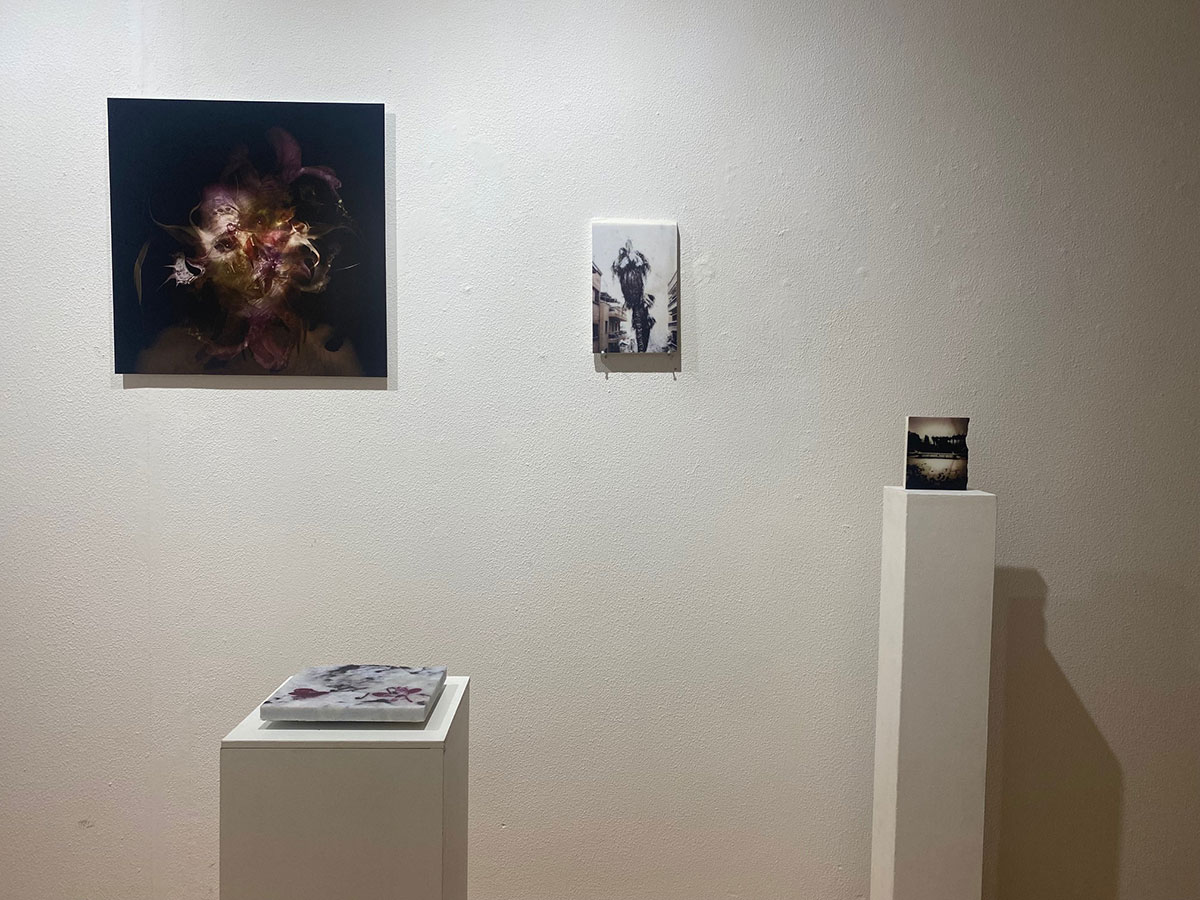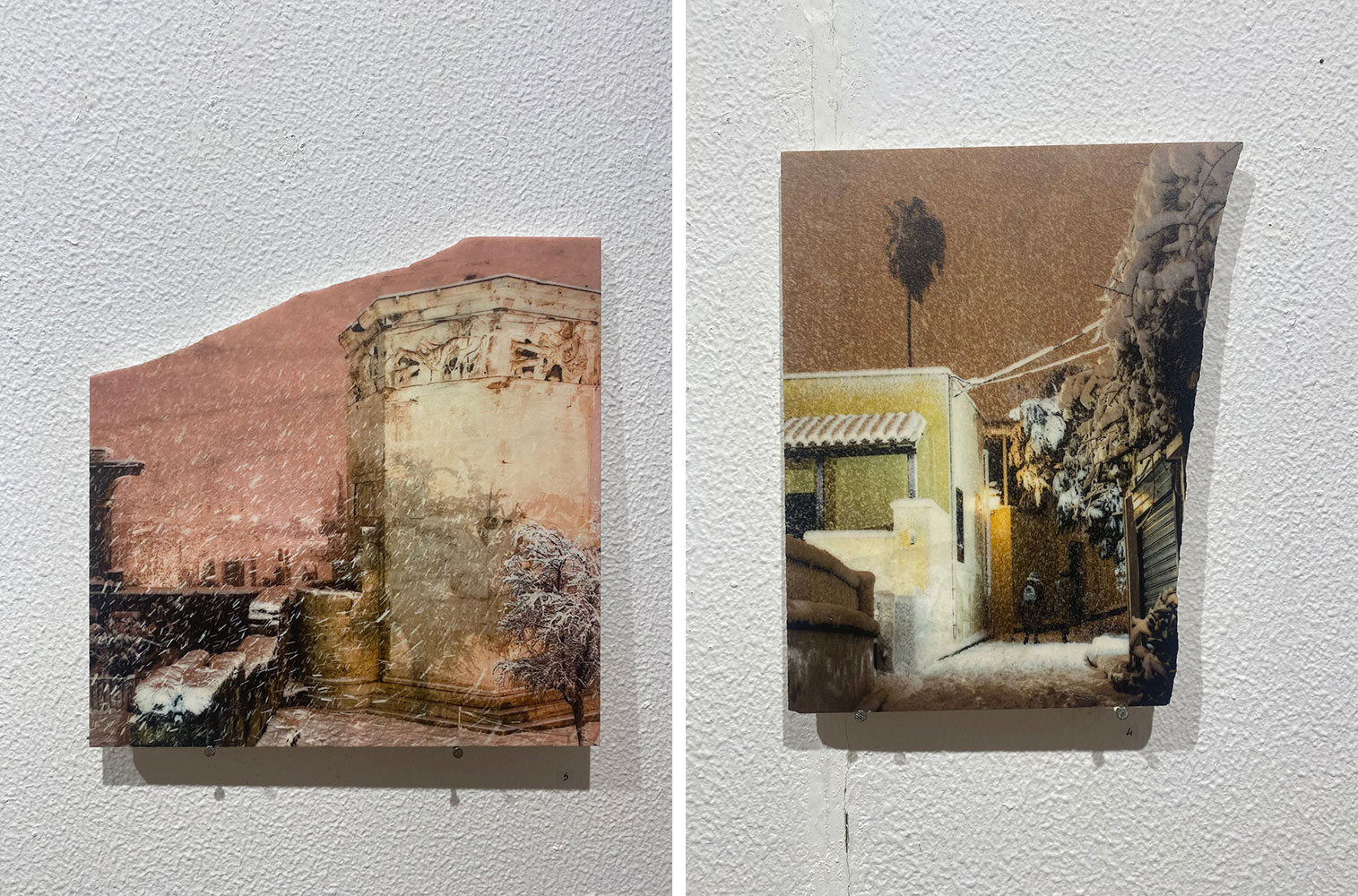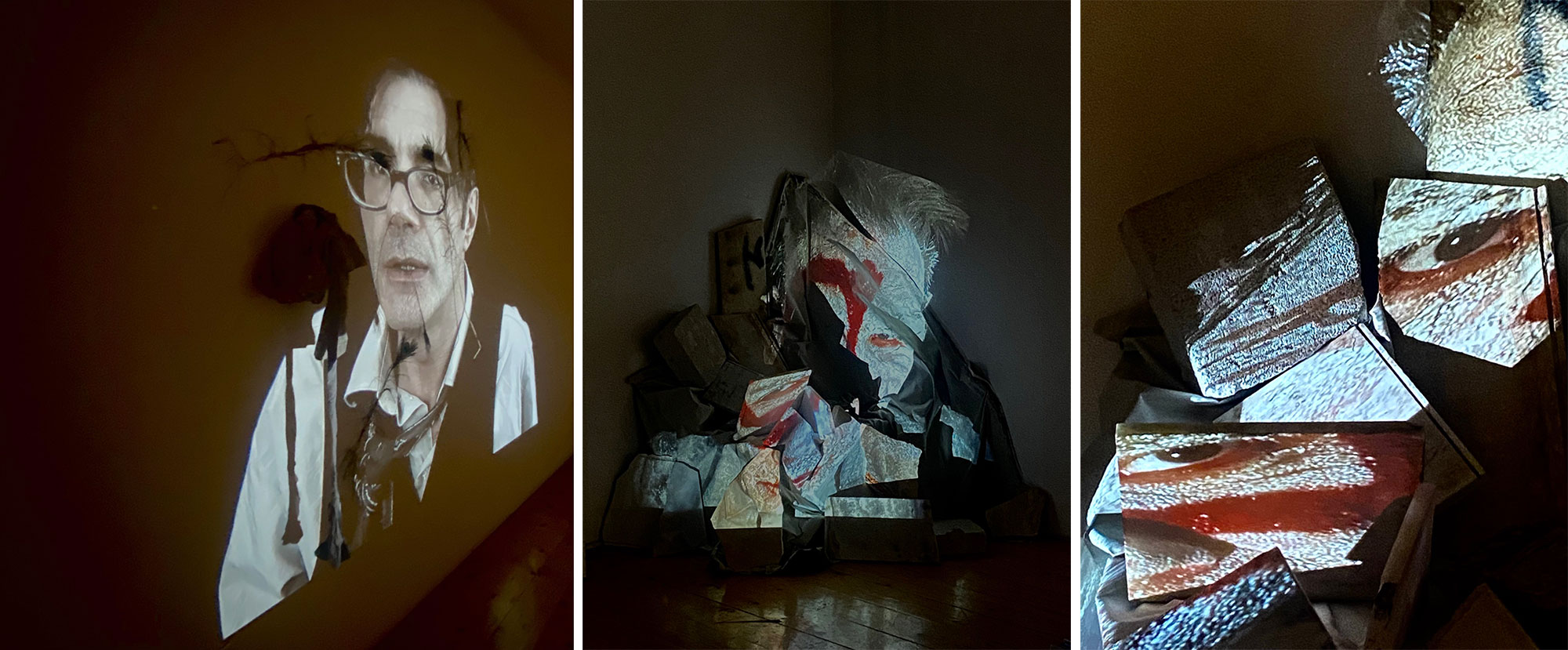INTERVIEW: Chloe Akrithaki & Filippos Tsitsopoulos
Chloe Akrithaki and Filippos Tsitsopoulos they are two artists who do not meet for the first time in the same space, after the presentation of their joint exhibition in 2021, at the CASK Gallery in Larissa. In “It ain’t even late in the day anymore. It’s night”, their new exhibition at Gallery 7 in Athens the two artists have composed together their personal narratives, in such a way that they fit into a common history of international standards. Both artists have an advantage, Chloe Akrithaki grew up, lived and still has ties with Berlin and now lives and works in Prague, in correspondence Filippos Tsitsopoulos lives and works between Madrid and London. In the interview that follows, they unravel the thread of their work, with central axis the thread that unites them…
By Efi Michalarou
Photo: Portaits: Artits Archive / Artworks: Chloe Akrithaki
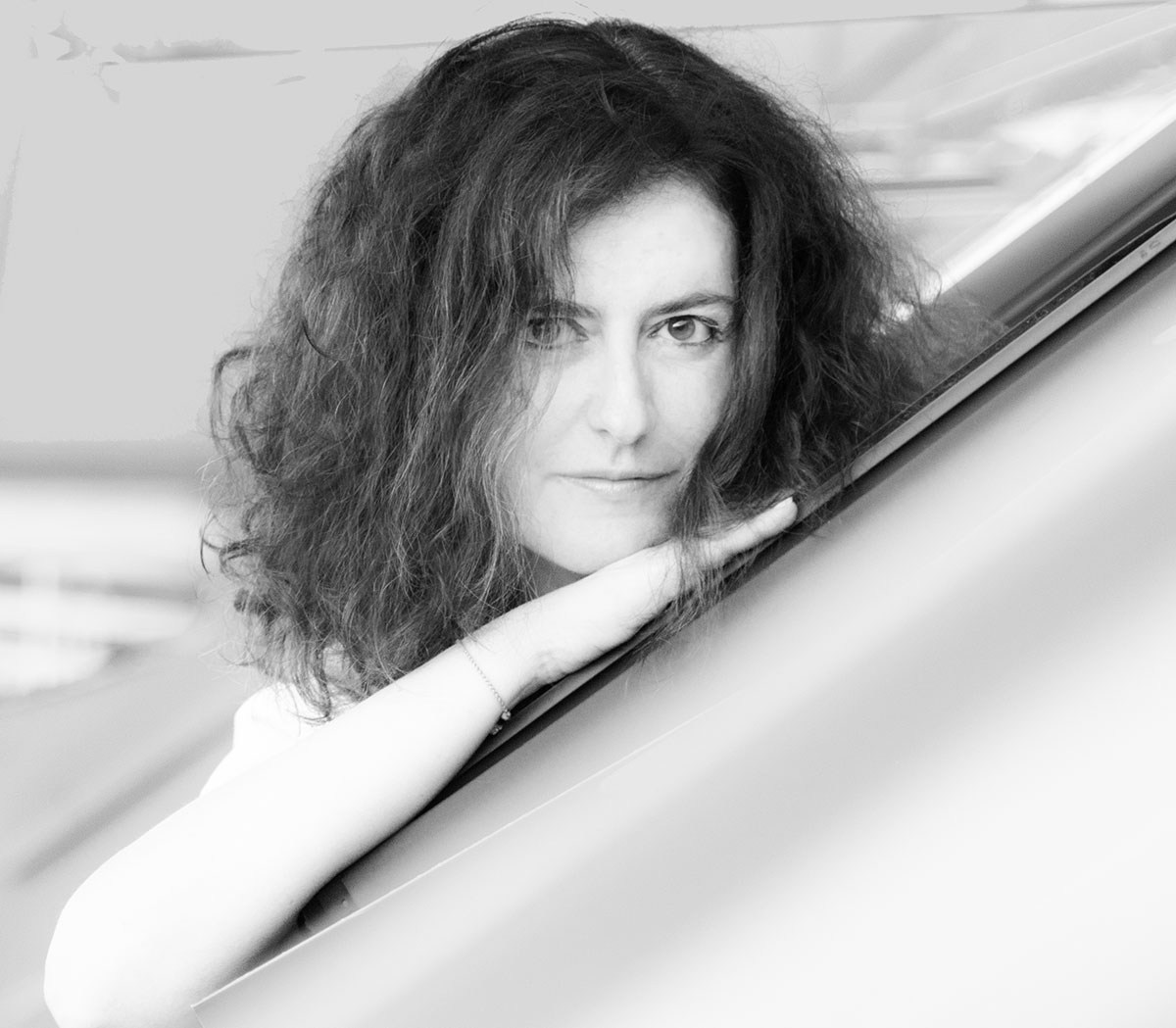
Having visited your previous exhibition at Cask Gallery in Larissa in 2021, we notice that the exhibition at Gallery 7 is completely different. How did the idea of the exhibition begin, what unites you and what differentiates you in this concept?
Indeed, the two exhibitions are very different. At the Cask gallery in Larissa both of us showed works on paper while in this exhibition we combine video, photography and different media such as marble and light. In both exhibitions the artworks compose a harmonious counterpoint in the relationship of two popular themes of the artistic creation, portrait landscape. The work of both of us is deeply anthropocentric, even in my works where the presence of the human being is implied through his absence… We can say that the exhibition “It ain’t even late in the day anymore- It’s night” begins or ends with a letter from Tennessee Williams, which basically tells us about the things that are changing the changing of times and how people are found levitated during this time. The duration of the exhibition is determined both by the duration of the one-act play and by Cloe’s artworks in which is clearly visible the idea that the image freezes and essentially freezes something that is about to melt.
The photos with the snowy Athens is a special series for many reasons. Why did you choose marble as media to print them? What does such a fragile, dangerous and ultimately difficult material represent for you?
The parks and monuments that are scattered in the Athenian cityscape, generous offering me marble fragments from demolished buildings and cemeteries, reveal a parallel reality. Keeping in mind the global environmental crisis, I strongly feel that the practice of recycling materials, in this case marble, is an imperative need. In these artworks the temporary snow of the city, which shows in an underground way the ephemerality of human existence, is preserved over the timelessness of marble, an element of our last residence and an indefeasible part of our culture. Substantially the snow creates an absolute and direct relationship with nature. The nature with that face, cold from the marble, that nothing can shake, that will remain unconcerned even when the entire human race will disappear.
We notice that you choose different sizes for your works, which coexist harmoniously on the same wall, this is the new trend that we have seen strongly abroad, but what story are you trying to tell the viewer through this communication pathway?
The different sizes result from the need to use materials that already exist. Thrown, broken pieces and slabs of marble and onyx, in various shapes and colors, each piece is a small story in itself. The photograph mixes-up yesterday with today. The snow crystals are intertwined with those of the marble. Scattered fragments of time and frozen moments on a journey from light to darkness and back.
Leaving the exhibition, not only from the theme, the curating, but also the dialogue between you, where the white and the black contain and are contained, it is one of those times when you I feel the satisfaction of being in Athens in front of an exhibition of international standards. Are you thinking of show the exhibition abroad as well?
Yes, the main idea of the exhibition could be transferred, because these materials will change and become the materials that we will find there, in the country we will decide to travel to, so the marble will be different or may not be marble. However, the idea of stone, the relationship between black and white, the relationship between hard and fragile, cold and hot, material and the fragment of time will still be the same.
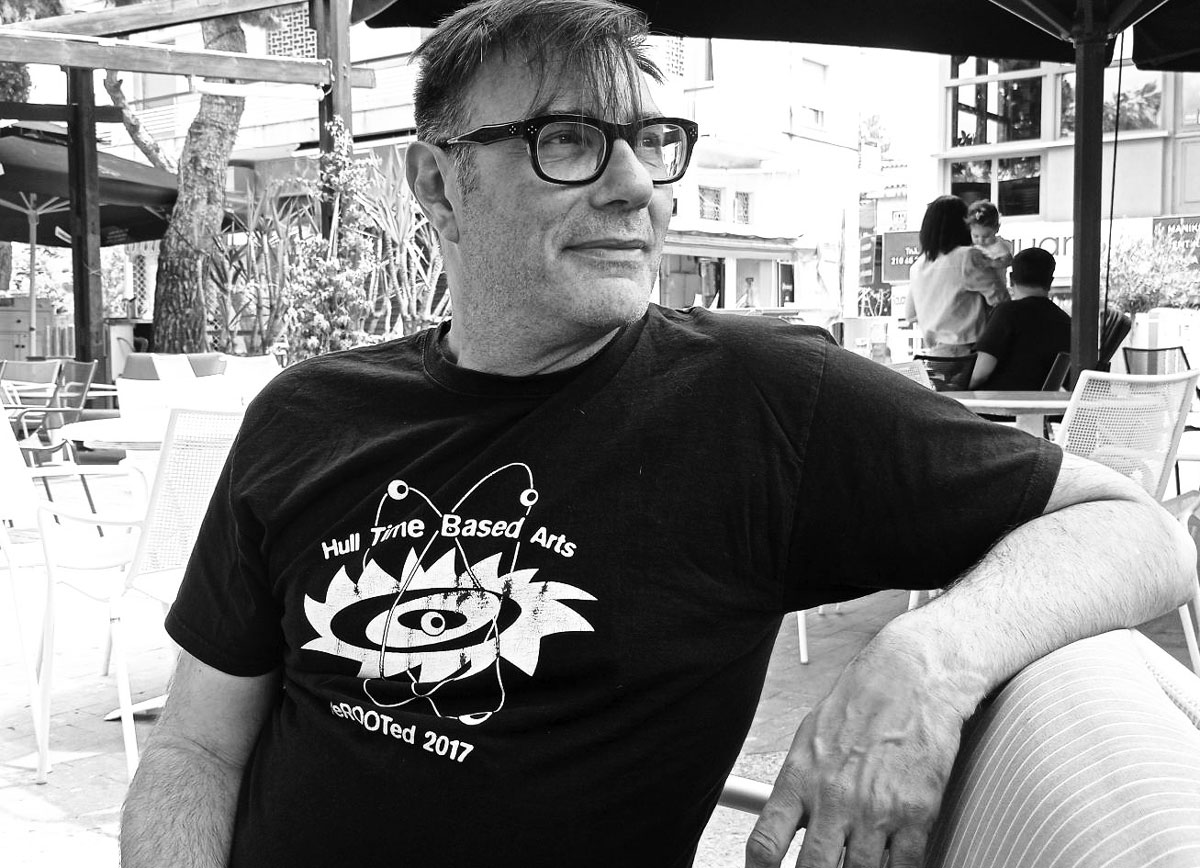
We are familiar with your performances, but your photos are very different. They look eerie, poetic and not related to the performances at all. How did they originate?
Precisely, my photos are different, eerie, most of them, almost all of them, it is a large series of visual material that I have collected over the years, namely I have a database of all these materials with which I compose this type of images that are based on a scan of a face (mine) in which I add and remove, alter and differentiate it. I consider these portraits as paintings because I basically work the pixels in the same way as I worked with oil paints, I mean to the point that they are lost, dissolved, become liquid… It’s a project that I continue to this day and creates basically what I am always saying, the image madness, or Stendhal Syndrome.
In your photos, you choose a black background, everything takes place in the shadow and the border of two worlds: physical and spiritual. Knowing that you have lived for many years in Spain, it seems that your photos touch the border of painters like Velasquez, how much have they influenced you and why do you choose black color?
I had worked for many years at the Prado Museum, where I did the educational programs and performances, I always had the opportunity to see the great works of the Museum outside its opening hours. This had great influence on me and for many years in the projects I was creating alongside the performances I was doing. I decided that the performance doesn’t has to have the same visual language with the portrait studies for pixelated masks where the work emerges from the bottomless black. Like what we call Claroscuro and it is the element that we find in all the painters of that era, Jose de Rivera, Murillo, Velasquez, Goya.
Your video is deeply overwhelmingwhile there are points where your performance touches on Shakespearean theatre. For you that you are Lliving for so many years in London is a natural consequence, but how easy is it to coexist on the border of two worlds and multiple roles?
In the stage plays that I had the good fortune to observe in London and Madrid I saw and met very good Shakespearean actors. I was most interested in how they deconstruct their role, how they forget Shakespeare in order to recite Shakespeare, or how they forget Tennessee Williams’s American ethnography so that Shakespeare can penetrate it.
The truth is, when it comes to videos, I’m one of the most demanding viewers. The videos that have managed to move me deeply over the years are scarce. Having seen a lot of videos at Jeu de Paumme and Le Bal in Paris for so many years, yours really touched me deeply and I was wondering, since your exhibition is of international standards, if you are thinking of taking it abroad?
In London I was looking in pubs to listen to people, how they express themselves, what is their kinesiology, to get information for the performances and the theater and how this information will help me approach a role. Since it is almost impossible to get close to a tragic character all these, my information /notes, were also a database that works in the same way as the collection of images in my portrait series. Answering the second part of your question Efi, the central idea could certainly be conveyed. The materials can be change and become the materials that we will find there, in the country we will decide to travel to, so the marble will be different, however, the idea of stone, the relationship between black and white, the relationship between hard and fragile, cold and hot, material and the fragment of time will still be the same.
Download Greek Version of Interview here
Info: Gallery 7, 20 Solonos & Voukourestiou Str., Athens, Greece, Duration: 7-28/1/2023, Days & Hours: Wed & Sat 12:00-16:00m Tue-Fri 12:00-20:00, www.gallery7.gr/
First Publication: www.dreamideamachine.com
© Interview-Efi Michalarou
